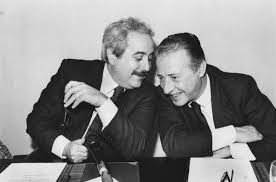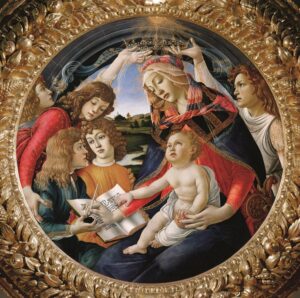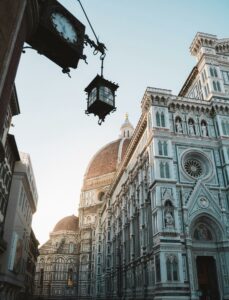by Romina Ciulli e Carole Dazzi
 Susan Sontag stated in her essay On Photography (1977): “No one has ever discovered ugliness through photographs. But many, through photographs, have discovered beauty”. In fact, photographic art-fact often invites us not just to reflect, but above all to glimpse a power in the visual image capable of arousing deep emotional reactions within us. As if, suddenly, through that shot, our gaze was able to see something that goes beyond custom, pushing us further. This is what happens in the book “Sulle gambe” by Donatella Ferrini, currently on pre-order on bookabook in a crowdfunding campain with the aim of publication, in which her young protagonist changes the painful approach to the vicissitudes of his life precisely after observing a picture. Let’s talk with the writer.
Susan Sontag stated in her essay On Photography (1977): “No one has ever discovered ugliness through photographs. But many, through photographs, have discovered beauty”. In fact, photographic art-fact often invites us not just to reflect, but above all to glimpse a power in the visual image capable of arousing deep emotional reactions within us. As if, suddenly, through that shot, our gaze was able to see something that goes beyond custom, pushing us further. This is what happens in the book “Sulle gambe” by Donatella Ferrini, currently on pre-order on bookabook in a crowdfunding campain with the aim of publication, in which her young protagonist changes the painful approach to the vicissitudes of his life precisely after observing a picture. Let’s talk with the writer.
The main character of your novel finds a way to redeem his complex and delicate personal affairs after observing the historic photograph taken of the magistrates Falcone and Borsellino in 1992 during a conference held in Palermo. This image, in fact, upsets the boy in some way, destabilizing him and causing a fundamental change. Can you tell us why you chose this photo and what reaction it provokes in the boy?
 The photo I chose is called Sequenza 15 and was taken by Tony Gentile. Even though it was taken in 1992, I believe it still speaks to young people all over the world. In fact, it tells of two men joking and smiling slyly. Actually, those two men are giants: judges Falcone and Borsellino who fought tirelessly for the truth, to the point of losing their lives for it. It is an image that is kept in the hearts of many of us. In an interview with the newspaper La Repubblica, Tony Gentile declared: “It is the image that gave us the strength to react” (after the massacres of 1992). This is the reason why I chose it. Alberto, the protagonist of my book, needed to find the strength to say enough, and it is precisely in that photo that he manages to find it. Even if the path to liberation from his trauma will still be very long.
The photo I chose is called Sequenza 15 and was taken by Tony Gentile. Even though it was taken in 1992, I believe it still speaks to young people all over the world. In fact, it tells of two men joking and smiling slyly. Actually, those two men are giants: judges Falcone and Borsellino who fought tirelessly for the truth, to the point of losing their lives for it. It is an image that is kept in the hearts of many of us. In an interview with the newspaper La Repubblica, Tony Gentile declared: “It is the image that gave us the strength to react” (after the massacres of 1992). This is the reason why I chose it. Alberto, the protagonist of my book, needed to find the strength to say enough, and it is precisely in that photo that he manages to find it. Even if the path to liberation from his trauma will still be very long.
Do you think that photographic language, as well as art in general, stirs different and contrasting feelings, but above all pushes us to (re)act? Can you give us some examples?
Yes, I am convinced. After the publication of strong photographs such as the one by Nick Ut – Napalm Girl – from 1972, or the more recent photo of the little Syrian refugee who drowned in October 2015 in front of the beach of Bodrum, a tourist paradise in Turkey, wearing a red t-shirt and dark shorts, our reactions have changed. They make distant problems seem closer, they throw tragedies in our faces, without filters or hypocrisy. At that point no one can hide. These are images that manage to capture history in an instant.
 Part of your story takes place in Florence, where Alberto, the protagonist, comes into contact with another form of art, that is painting. And in particular, the work Madonna del Magnificat by Botticelli. Can you tell us how much the artistic component influences his education?
Part of your story takes place in Florence, where Alberto, the protagonist, comes into contact with another form of art, that is painting. And in particular, the work Madonna del Magnificat by Botticelli. Can you tell us how much the artistic component influences his education?
Alberto is the son of an Italian teacher and an environmental engineer. His mother is passionate about art and in the first years of his life she often takes her son to Florence where she shows him the Uffizi. It is there that the child comes into contact with the work Madonna del Magnificat by Botticelli and is impressed by it from an early age. As a child he is captivated by the colors of the painting, by the landscape that instills serenity in him. As a teenager he will remember his mother intent on protecting the child with the sweetness of her body and this will comfort him through his darkest moments. Florence and art will often intertwine with his life.
Yours is a coming-of-age novel where all the characters contribute to the evolution of the main one through a narration made of emotions, passions, pains, discoveries, until reaching the transformation. Can you briefly tell us about this path and which character do you consider the most involved in this evolutionary process?
Alberto is a boy who will be the victim of bullying for twelve long years. The traumatic events will happen in the indifference of the school and in the blindness of the adult world, often too ego-centered and taken up by everyday life. The book “Sulle gambe” is about the courage to react, to transform trauma into a life experience. The protagonist will try to do it through a path of analysis and with the help of his family, his friends Lara and Jose, and especially of his aunt Sole, effervescent and full of life, she is the first who will be able to break his silences. However, in my opinion, the character who will be able to evolve in a positive way more than anyone else is Saverio, Alberto’s father. In fact, brought to his knees by life due to a series of events, he will be able to get up and find new and unexplored paths to follow. He will leave his comfort zone to became a man satisfied with himself and his life. He is the character who will throw his heart beyond obstacles more than anyone else.
The title “Sulle gambe” is taken from a phrase by Falcone, and more precisely “Men pass, ideas remain. Their moral tensions remain and they will continue to walk on the legs of other men.” What value did you want to express? And how does your character takes inspiration from it for his life experience?
Actually this is one of the many quotes from judge Falcone that Alberto memorizes after his encounter with the photo Sequenza 15. These phrase, which he will recite as a mantra, will help him to find the courage to react to the abuses of which he is a victim. Even Greta, Alberto’s love – a girl he met in Livorno – with her natural wisdom will talk to him about legs and the need to have strong and toned ones. From here Alberto, one day among many, will develop a reflection on legs, on how important they are to get up and go where we decide to go.
 Are there any biographical aspects related to artistic language that have influenced your work?
Are there any biographical aspects related to artistic language that have influenced your work?
I am very attached to the city of Florence. In the novel I speak of this city as a place where art is everywhere: in the alleys, in the streets, in the monuments that amaze with their beauty, you can breathe it everywhere. The bond with this city has undoubtedly guided me in my writing. I believe that turning to art, whatever language we choose – music, theater, painting, writing, etc. – can save us from the discomfort of this complicated historical period. Cultivating “beauty” in everyday life is, in my opinion, the antidote to the distortions that we unfortunately witness every day.
This is the link to pre-order the book “Sulle gambe” by Donatella Ferrini: https://bookabook.it/libro/sulle-gambe/